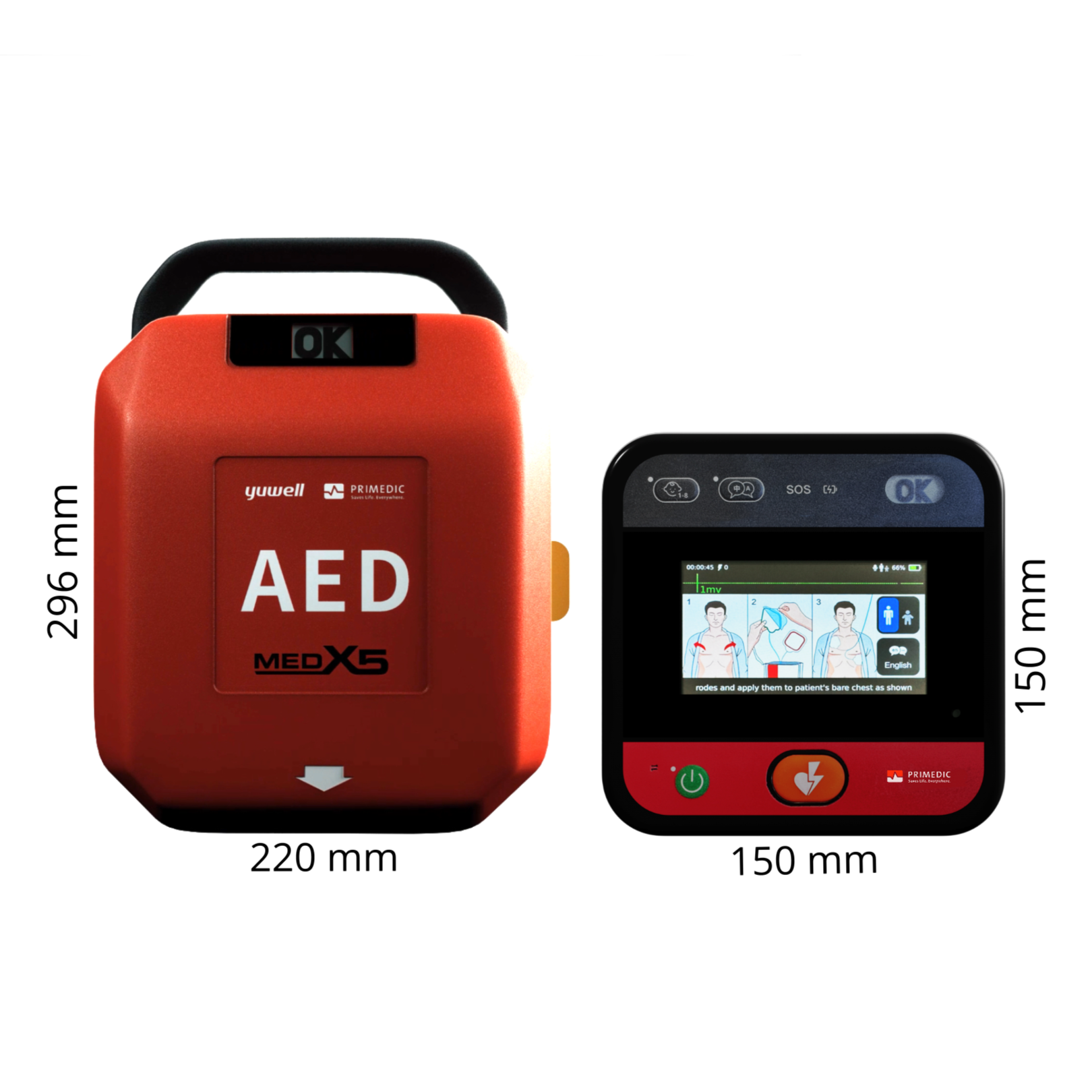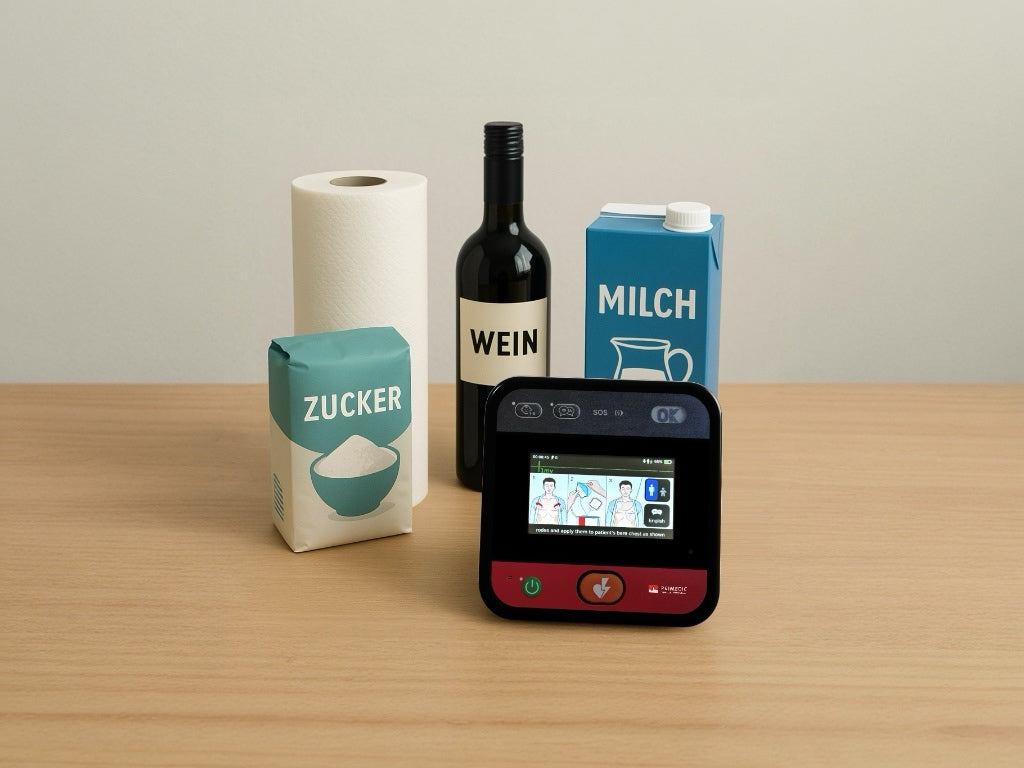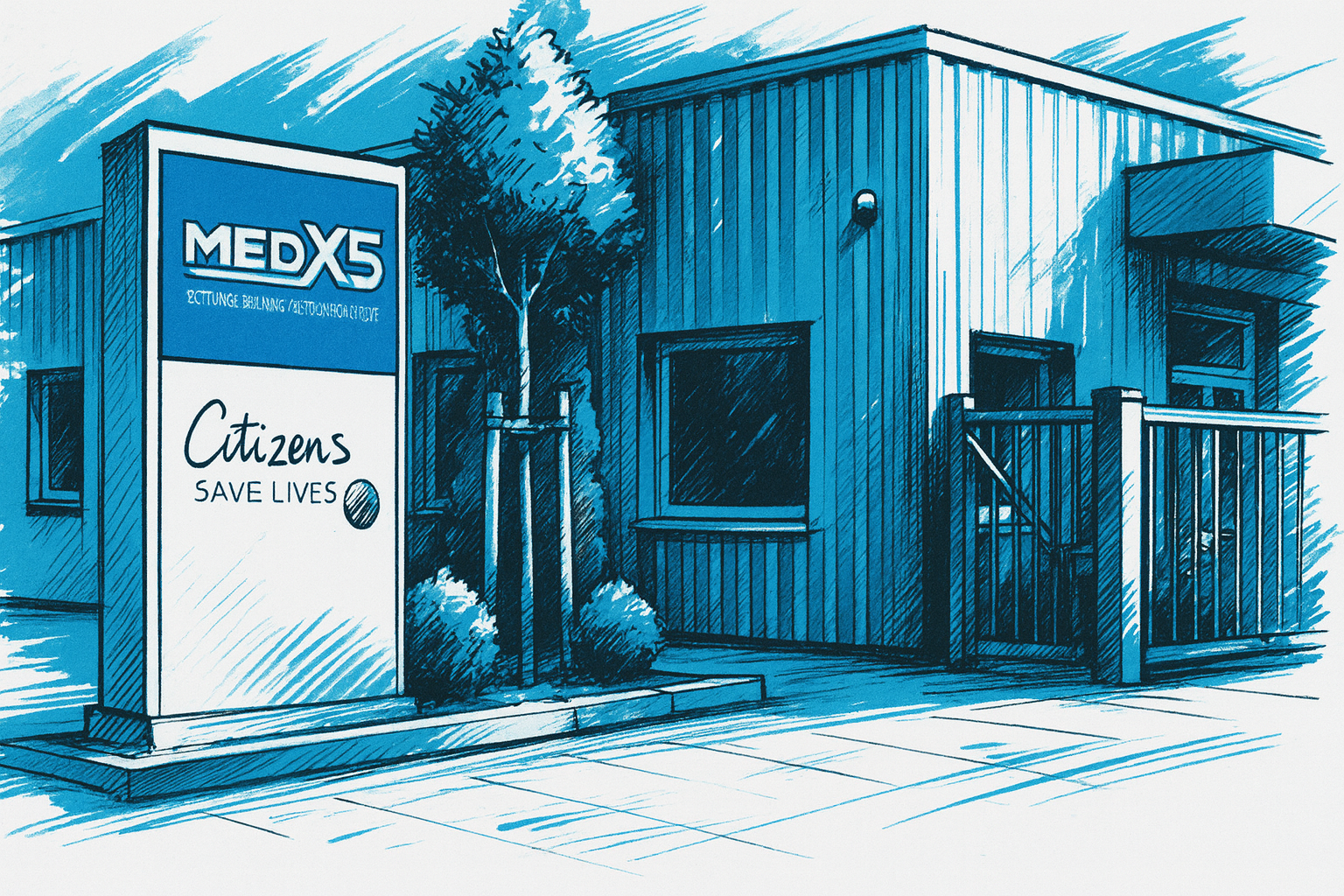PRIVATE & HOME
Your personal guardian angel for a heart-safe home A sudden cardiac arrest often comes unexpectedly – and that's when every second counts. Wit...
As an end customer, you benefit from wholesale prices during this period that are otherwise only available to retailers! Take advantage of our offer for this defibrillator until November 30, 2025, and protect yourself and those around you!
Der HeartSave Defibrillator ist als automatische (YA) und manuelle (Y) Version erhältlich. Die automatische Variante eignet sich ideal für Laien und öffentliche Bereiche, während die manuelle mehr Kontrolle für medizinisches Fachpersonal bietet. Beide Modelle überzeugen durch hohe Sicherheit, intuitive Bedienung und zuverlässige Technik.
Sudden cardiac death is one of the leading causes of death worldwide – every six seconds, someone loses their life to it. This alarming statistic underscores the urgent need for rapid first aid. An automated external defibrillator (AED) can save lives in the critical first minutes, because with every minute without CPR and defibrillation, the chance of survival decreases by 10%. Therefore, the widespread availability of defibrillators in public buildings, businesses, and residential areas is not an option, but a life-saving necessity.
Millions of people worldwide die from sudden cardiac arrest every year – in Europe alone, the number is between 350,000 and 700,000. These dramatic figures make sudden cardiac arrest one of the leading causes of death today. Many of these lives could be saved through immediate defibrillation. Studies show that in cases of ventricular fibrillation, the most common cause of sudden cardiac arrest, defibrillation within the first 3-5 minutes is crucial. Modern AED devices allow even laypersons to use them safely and dramatically increase the survival rate from under 10% to up to 75%.
Sudden cardiac arrest most often strikes where victims feel safe: 84% of all cases occur in private settings, at home or during leisure activities – far from hospitals and emergency services. This statistic underscores the critical importance of defibrillators in residential areas, sports clubs, gyms, and public facilities. When emergency services take an average of 8-12 minutes to arrive, an available AED is often the only chance of survival. Therefore, the installation of publicly accessible defibrillators and the training of first responders in the use of these life-saving devices should be a top priority – because in an emergency, every second counts.
Anyone can save a life in an emergency! Have the courage to help – no prior knowledge or fear is required: Check – Call – Compress are the first steps. If you detect an emergency, check for breathing, call emergency services, and immediately begin chest compressions. And then: Quickly use an automated external defibrillator (AED)!
The AED explains everything to you step by step – loudly, clearly, and understandably. You can't go wrong! Every move counts, and every minute can save a life. Be brave, intervene, and become a lifesaver. You can do it!
The ideal lifesaver for you, your family and your surroundings! For home, on the go or at work.
Starting from €799 incl. VAT or in your individual desired configuration, e.g., 24/7/365 remote monitoring, with color screen, 6 languages...

Your personal guardian angel for a heart-safe home A sudden cardiac arrest often comes unexpectedly – and that's when every second counts. Wit...

Defibrillators for companies: save lives, increase safety Discover how a defibrillator makes your business safer. With easy operation and a qui...

Defibrillators: Lifesavers for your community Discover how defibrillators can improve the safety and wellbeing of your citizens. With ease of u...

Defibrillators: lifesavers for your club or cooperative Discover how a defibrillator increases the safety of your members and guests. With easy...

Defibrillators: lifesavers for your school Discover how a defibrillator increases the safety of your students, teachers and staff. With ease of...

Defibrillators: Essential for your healthcare facility Discover how a defibrillator increases the safety of your patients and staff. With...
1. Have a defibrillator ready!
2. If the person is unconscious and unresponsive – act!
3. Check-Call-Press & Deliver Shock.
4. Pay attention to warning signs and reduce risks!
5. Make sure your defibrillator is ready for use!
Modern devices have CPR feedback sensors and provide additional assistance during chest compressions.


Our service is comprehensive and professional. We don't differentiate between Silver, Gold, or Platinum customers, because everyone wants maximum security. Consultation, financing (if needed), installation, training, and of course, technical service are what set MedX5 apart, and have been for 25 years.

Bystander defibrillators, also known as automated external defibrillators (AEDs), are portable medical devices designed to help treat sudden cardiac arrest outside of the hospital. Unlike professional defibrillators, which are often used in medical facilities by trained personnel, bystander defibrillators are designed to be operated by anyone, especially those without medical training.
Our offered defibrillators are easy to use and come with voice or visual instructions that guide the user through the entire process, from placing the electrodes on the patient's body to delivering the shock if necessary. They automatically analyze the patient's heart rhythm and deliver a shock only when it is actually needed.
Similar to fire extinguishers, lay defibrillators must be installed wherever family members, friends, employees, guests, customers, patients, members and students are located to provide immediate help in an emergency before professional medical help arrives. The immediate availability (max. 3-5 minutes) and use of AEDs leads to a significantly higher survival rate.
Defibrillators differ according to their type, functionality and area of application.
The defibrillators we offer are specially designed for laypersons and are a life-saving addition to first aid equipment.
A layperson AED is designed to be easy to use and does not require medical training.
A defibrillator is used when a person is unconscious and has no signs of life.
Sudden cardiac arrest is usually the result of a fatal cardiac arrhythmia. The purpose of a defibrillator is to restore the heart to a normal rhythm by delivering a controlled electric shock.
Typically, a defibrillator is used in ventricular fibrillation:
This is the most common cause of sudden cardiac arrest, a life-threatening condition in which the heart suddenly begins to flutter in an uncoordinated manner. In such cases, a defibrillator can be used to deliver an electric shock and bring the heart back to a normal rhythm.
Sudden cardiac death occurs when the heart stops pumping, causing it to stop pumping blood (cardiac arrest). This can have a variety of causes, including:
Ventricular fibrillation is a life-threatening cardiac arrhythmia in which the heart's chambers contract rapidly and uncoordinatedly, rather than beating in sync. This means the heart no longer pumps effectively and blood is not circulating throughout the body. Ventricular fibrillation is equivalent to sudden cardiac arrest and leads to circulatory arrest. There are several causes of ventricular fibrillation, including:
Citizens Save Lives Association is an initiative that aims to promote public education about life-saving measures and increase the availability of life-saving devices such as automated external defibrillators (AEDs). This initiative encourages citizens to actively participate in the resuscitation of people who suffer sudden cardiac arrest, thus helping to improve the chances of survival in emergency situations.
There are numerous app providers, but they only show regional defibrillator locations. The problem is that visitors or guests from abroad have no idea which app is the right one for the environment they are in. However, Citizens Save Lives has developed an app (CISALI) that operates globally, is manufacturer-independent and free of charge. In addition, the app offers additional functions such as
e.g. emergency numbers or the activation of first responders.
The goals of Citizens Save Lives include:
Education and training: The initiative aims to educate the public on the importance of resuscitation and the use of AEDs. This includes providing training and information on proper resuscitation procedures and the use of an AED.
By promoting knowledge, training and availability of life-saving measures, Citizens Save Lives helps ensure that citizens are better prepared to act quickly and effectively in an emergency and save lives. The initiative plays an important role in creating a crisis-resilient and life-saving society.
HeartSine defibrillators have several features that make them a preferred choice for life-saving defibrillation in emergency situations. Here are some of the outstanding features that make HeartSine defibrillators stand out:
The new generation of first aid defibrillators from Primedic Germany was specially developed and optimized for a broad population group with different levels of user knowledge. Children (> 1 year) and adults can be saved effectively and efficiently from sudden cardiac death. The very simple, safe and intuitive operation guarantees that even untrained first aiders are able to save lives.
Any electric shock required is triggered by pressing the shock button on the HeartSave Y and automatically on the HeartSave YA.